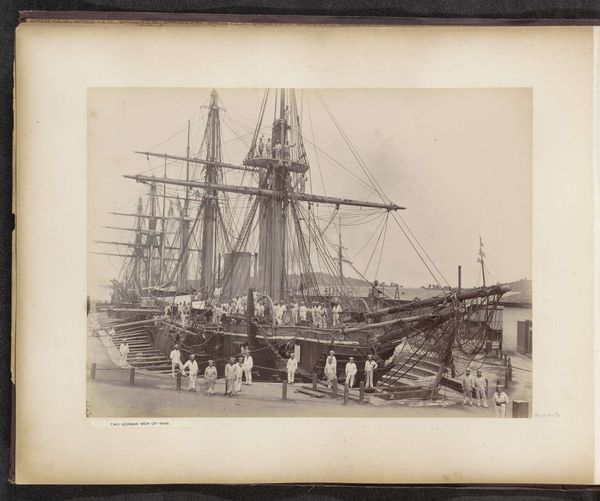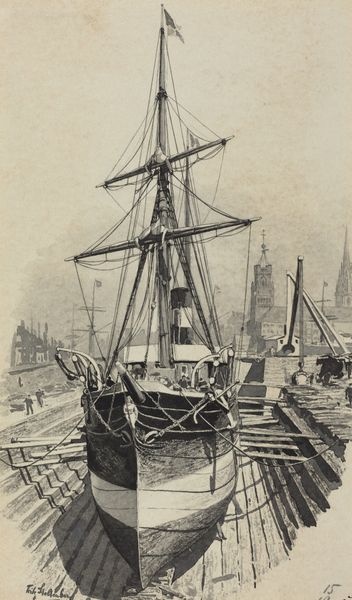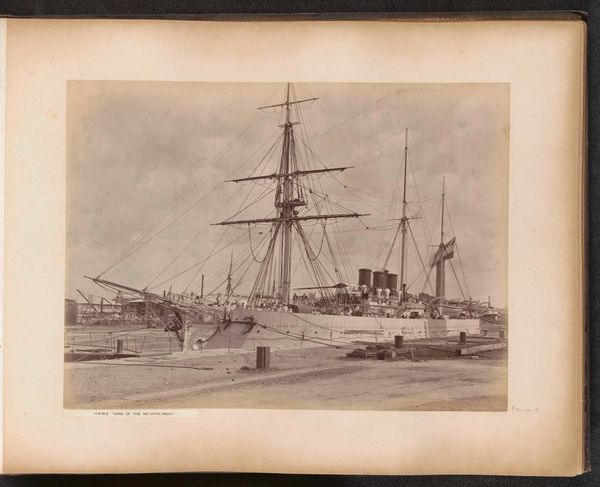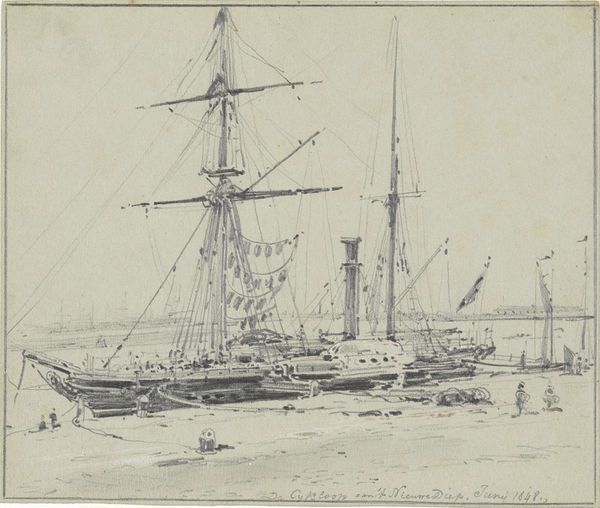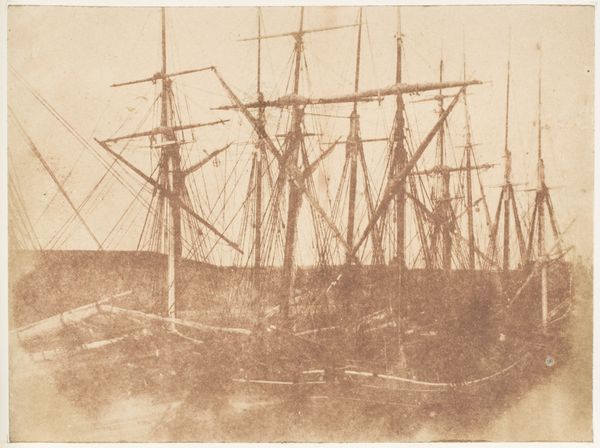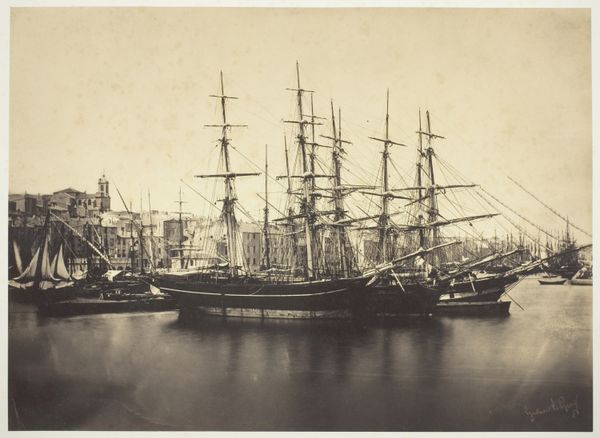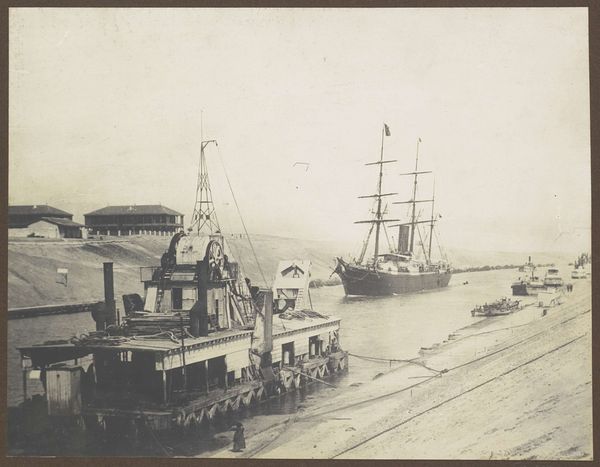
Copyright: National Gallery of Art: CC0 1.0
Editor: This is "Krahn im Freihafen," a pencil drawing from 1893 by Fritz Stoltenberg, depicting the harbor. I’m struck by the contrast between the raw, industrial crane and the elegant sailing ship. It feels like a study of progress and labor, a changing landscape. What can you tell me about this work? Curator: What interests me most here is the depiction of labor. The artist meticulously renders the industrial infrastructure – the crane, the stacks of goods. Consider the pencil strokes themselves. What kind of labor went into making this drawing? What does the artist tell us by focusing on these elements so closely? Editor: That's interesting, I was focusing on the overall composition but I see what you mean, focusing on how much time went into illustrating such details. What was the experience like for laborers during that time, during industrial expansion? Curator: Exactly. The artist isn't simply recording a scene; they are making a statement about the changing nature of work. This port scene highlights that pivot: sailing ships which required skilled maritime workers side by side with stevedores and machinists in a highly industrial environment. We need to remember that German Expressionism, though appearing a little later, really found its voice during a time when Germany was undergoing major transition, and experiencing massive growth in cities and manufacturing, similar to what we see here. Editor: So, by focusing on the crane and the goods being loaded, the artist emphasizes the sheer physical labor involved? I'm not just looking at a pretty scene of a harbor. Curator: Precisely. And consider what "goods" mean – who is consuming them, and where are they going? How did that relate to class structure during that time, for instance? Are we complicit by observing? Editor: I’d never really thought about the drawing itself *as* labor before, as something mirroring the port scene’s themes. That shift in perspective really changes how I see this drawing and German art generally. Curator: Exactly! I think by looking closer at what we see and what we do not see, we have made strides toward understanding more broadly what the artwork *means.*
Comments
No comments
Be the first to comment and join the conversation on the ultimate creative platform.
